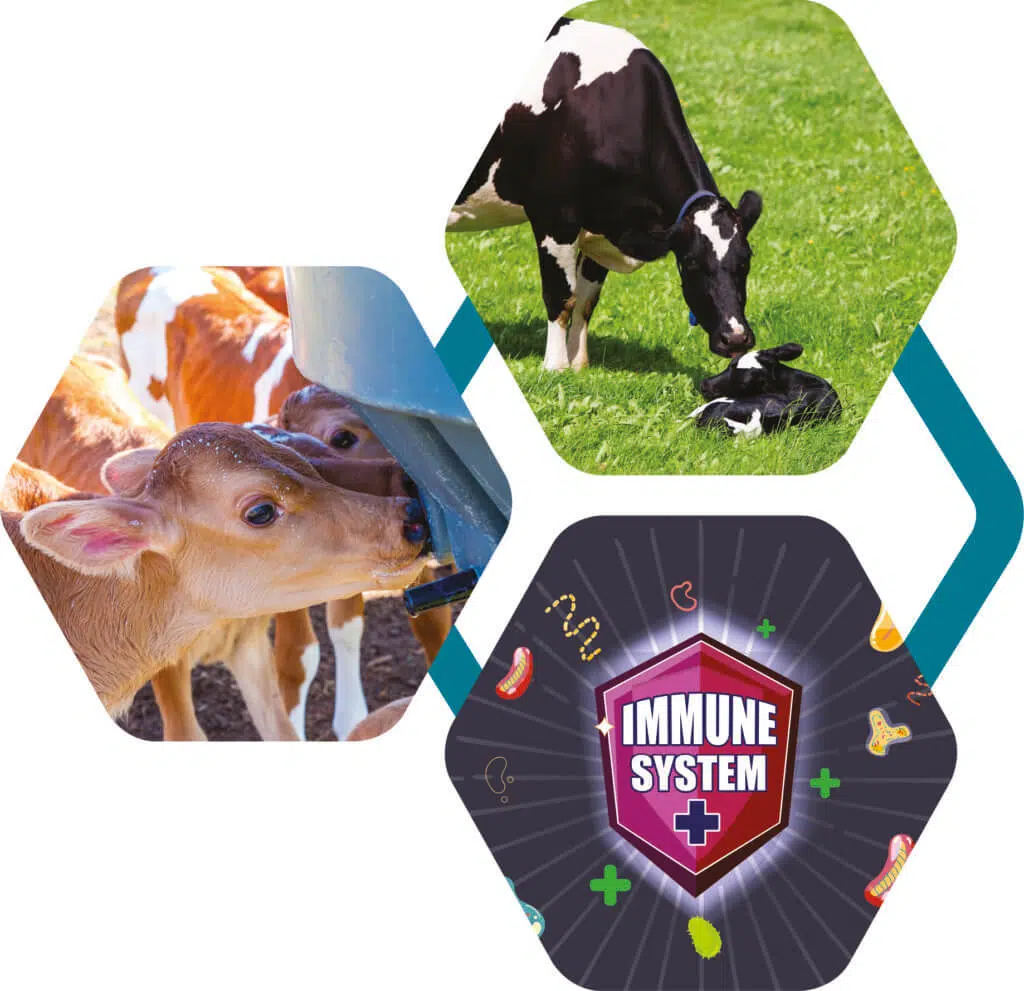Dairy calves and steam-up cows are where farmers really get a chance to change the future of their herd. These two life stages are crucial and, while the importance of excellent nutrition for both stages is well known, not many people understand the full benefits that can be achieved if you ramp up your efforts to improve calf development.
Before the beginning
Research has busted the myth that it’s sufficient to start looking after your calf only once she is born. Imagine getting a head start on your calf’s development to really ensure that all the effort you put into your calves after they are born is magnified. We can, and should, do this while the calf is still in utero. To achieve this head start, we need to view our dry cows not as “cows on a break” but as vehicles carrying the future of our herd. Research by Marques et al. (2016) shows that by changing the mineral supplementation of the cow during her last trimester, we can affect the lifetime performance potential of the foetus she is carrying.
In simple terms, the cow passes on her nutrients to the calf in utero. If the cow is running low on reserves, the calf will start life with a deficit, and it is this starting level of minerals that determines the calf’s immune status at birth. The calf is entirely dependent on the cow for development of immunity, both from this in utero download of minerals and from immunoglobulins in the colostrum. As a result of this improved mineral nutrition, cow immune response is improved, with a consequent increased immunoglobulin G (IgG) content in the colostrum. The better the colostrum quality and IgG content, the better the transfer of passive immunity to the calf.
Another benefit
Interestingly, in the first weeks of the calf’s life, its liver levels of trace minerals are significantly higher (often more than double) than those of the dam. After the first few weeks, these levels drop to roughly the same as in the cow. Where did all those minerals go? They were used by the calf to effectively build an adaptive immune system. This is why we need to ensure optimum mineral levels in the cow in order to improve calf development. Now, I know what you are thinking: “Can’t we just catch up by feeding these minerals to the calf?”
As supermarket managers say, “A sale missed today is a sale lost forever”. We will never be able to replace or catch up on what was meant to happen in utero. The effects of reduced mineral nutrition in the dry period might not be as evident in the cow as in the calf. Reduced trace mineral supply to the calf will compromise enzyme function and subsequently reduce her immunity. Even a small, sustained mineral deficiency can lead to suboptimal growth. By ensuring optimal trace mineral supplementation in the last 60 days before calving, we are able to stimulate the genetic expression needed for improved lifetime performance and health (Marques et al., 2016).
Lifetime performance
We have now named two benefits from improving dry cow nutrition before calving; the third benefit is to be found in lifetime performance. Your calves will be equipped with better immunity and able to handle stress and disease challenges more effectively and will, therefore, experience fewer obstacles on their road to optimum growth and health.
The calves in the study by Marques et al. (2016) showed dramatically improved weaning weights over the other calves in the study. A heavier weaning weight at the same age will have a positive effect throughout the calf’s life. Being younger at first artificial insemination (AI) and at calving could mean that the cow will have a longer productive life in the herd. Equipped with a more robust immune system, she will respond more effectively to vaccinations, and this will help to build resilience into your herd. In pasture-based systems, age and weight at first AI are critical if the cow is to catch the correct breeding season and remain profitable.
Conclusion
I have named three major benefits and a raft of other bonuses, so why don’t we opt to give the calves that represent the future of our herd the best start they can get? Improving dry cow mineral nutrition in order to improve calf development is strategically smart, simple to apply, and far cheaper than rearing poor-quality heifers.
Technical adviser: Ruminants










